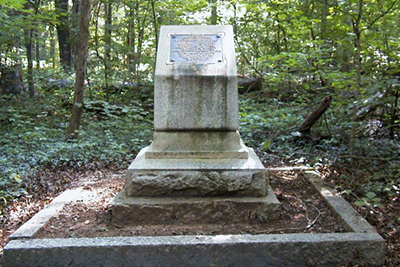Dixon, Henry ("Hal")
ca. 1750–17 July 1782
 Henry ("Hal") Dixon, Revolutionary War officer, was born in the part of Granville County that later became Orange and then Caswell, the son of Henry Dixon, Sr. Little is known about his life before the outbreak of the American Revolution. In 1763 he married Martha Wynne in Halifax County, Va. That Dixon had received some militia experience is clear, for when North Carolina was charged to form its first units of the Continental line in September 1775, he was commissioned captain of the First Regiment. He rose through the ranks quickly, becoming a major in July 1776 and a lieutenant colonel in May 1778 (amidst some controversy from several more senior officers). In the spring of 1778 the North Carolina legislature appointed Dixon "Inspector General over Militia," a post he held for the remainder of the war. His considerable duties involved raising militia units, equipping them for action, and coordinating their service with the Continental command. He was in close contact with Generals Jethro Sumner and Nathanael Greene in the defense of the southern states.
Henry ("Hal") Dixon, Revolutionary War officer, was born in the part of Granville County that later became Orange and then Caswell, the son of Henry Dixon, Sr. Little is known about his life before the outbreak of the American Revolution. In 1763 he married Martha Wynne in Halifax County, Va. That Dixon had received some militia experience is clear, for when North Carolina was charged to form its first units of the Continental line in September 1775, he was commissioned captain of the First Regiment. He rose through the ranks quickly, becoming a major in July 1776 and a lieutenant colonel in May 1778 (amidst some controversy from several more senior officers). In the spring of 1778 the North Carolina legislature appointed Dixon "Inspector General over Militia," a post he held for the remainder of the war. His considerable duties involved raising militia units, equipping them for action, and coordinating their service with the Continental command. He was in close contact with Generals Jethro Sumner and Nathanael Greene in the defense of the southern states.
In June 1779 Dixon was severely wounded at Stono Ferry near Charleston, S.C., in the campaign commanded by General Benjamin Lincoln. As the war moved into North Carolina, he played a key role in raising militia to meet the British advance. In 1781 he fought in the actions at Wetzell's Mill and Guilford Court House and was wounded again at Eutaw Springs, S.C. He never recovered from the injuries and died at home the next year. Dixon left his wife and seven children and apparently the family moved west to Tennessee and Kentucky. A grandson, Archibald Dixon, succeeded Henry Clay as senator from Kentucky.
References:
Walter Clark, ed., State Records of North Carolina, vols. 12–22 (1896–1907).
William S. Powell, When the Past Refused to Die, A History of Caswell County (1977).
Phillips Russell, North Carolina in the Revolutionary War (1965).
William L. Saunders, ed., Colonial Records of North Carolina, vol. 10 (1890).
Additional Resources:
"CSR Documents by Dixon, Henry, ca. 1750-1782." Colonial and State Records of North Carolina. Documenting the American South, University of North Carolina at Chapel Hill. https://docsouth.unc.edu/csr/index.html/creators/csr10998 (accessed February 7, 2014).
"Hal Dixon Monument, Guilford Courthouse." Commemorative Landscapes of North Carolina. Documenting the American South, University of North Carolina at Chapel Hill. https://docsouth.unc.edu/commland/monument/126/ (accessed February 7, 2014).
Schenck, D. "Biographical sketch of Lieut. Col. Hal Dixon. The Chevalier Bayard of the Revolutionary War." North Carolina University Magazine, Old Series, Vol. 28. New Series, Vol. 15. No. 1 (October 1895). 1-16. https://archive.org/stream/northcarolinauni18941895#page/n587/mode/2up (accessed February 7, 2014).
"Lt. Col. "Hal" Dixon Monument." List of Classified Structures. Park Historic Structures Program. National Park Service. U.S. Department of the Interior. http://www.hscl.cr.nps.gov/insidenps/report.asp?STATE=NC&PARK=GUCO&STRUCTURE=&SORT=&RECORDNO=5 (accessed February 7, 2014).
Image Credits:
"Hal Dixon Monument." Photograph. Park Monuments, Guilford Courthouse National Military Park. National Park Service. U.S. Department of the Interior. http://home.nps.gov/media/photo/gallery.htm?id=333550B3-1DD8-B71C-07F94C00DFE1C119 (accessed February 7, 2014).
1 January 1986 | Miller, Mark F.